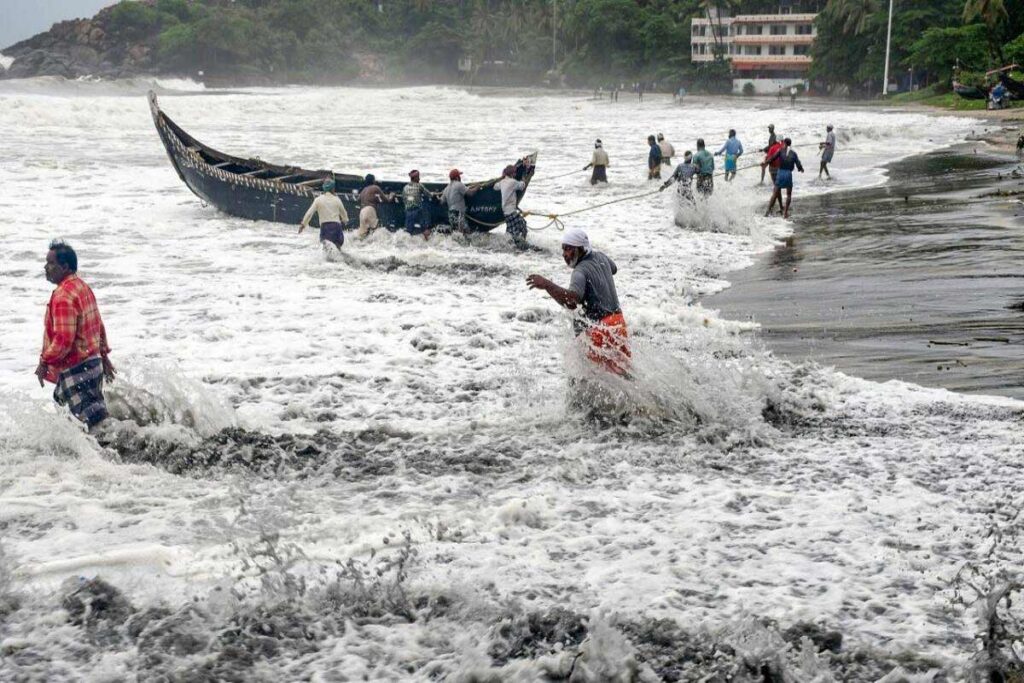On Sunday afternoon, a high-level committee led by cabinet secretary Rajiv Gauba met to assess the preparedness of agencies in five vulnerable states – Gujarat, Maharashtra, Goa, Karnataka, and Kerala – that are threatened by Cyclone Tauktae, which is moving along India’s western coast towards Gujarat.
The meeting was also attended by secretaries from the ministries of home, power, shipping, communications, civil aviation, fisheries, the chairman of the Railway Board, the member secretary of the NDMA, and other officials.
Tauktae, which has strengthened into a “very strong cyclonic storm,” will cross the Gujarat coast about early morning on May 18, according to the India Meteorological Department (IMD).
“The Very Severe Cyclonic Storm “Tauktae” (pronounced as Tau’Te) centered at 0830 hours IST today over the east-central Arabian Sea about 120 km west-southwest of Panjim-Goa, 420 km south of Mumbai, 660 km south-southeast of Veraval (Gujarat), and 810 km southeast of Karachi (Pakistan),” the IMD said in a tweet on Sunday afternoon.
At the meeting, Gauba, the IMD president, said that Cyclone Tauktae would hit Gujarat with wind speeds ranging from 150 to 160 km/h, followed by squally waves, heavy rainfall, and storm surge in the state’s coastal districts.
The chief secretaries of the affected states informed the central committee of the preparations made to deal with the cyclonic storm. They stated that adequate stocks of food grain, drinking water, and other vital resources have been organized and that arrangements have been made to sustain essential services such as power and telecommunications.
Meanwhile, the National Disaster Response Force (NDRF) stated that it has deployed/made available 79 teams in these areas, with a further 22 teams on standby. Rescue and rescue units from the Army, Navy, and Coast Guard, as well as ships and aircraft, have been dispatched.
With the Covid-19 pandemic in mind, the central committee was told that the appropriate preparations had been made to ensure the continuous operation of hospitals and Covid treatment centers, as well as the generation and delivery of oxygen to these facilities.










